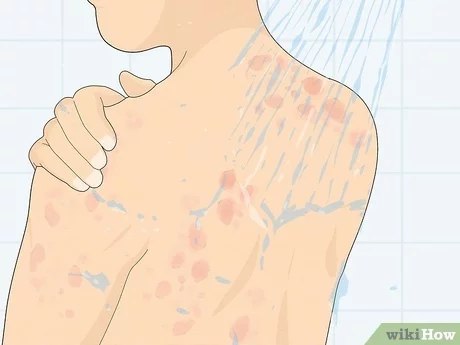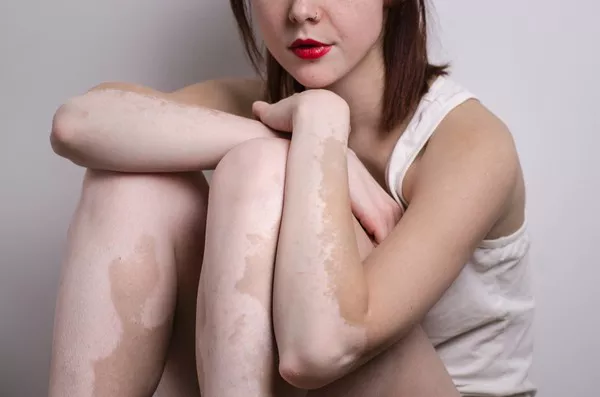Hives, also known as urticaria, are characterized by itchy welts on the skin that can range from small spots to large patches. These welts can appear suddenly, disappear, and reappear over a period of time. While hives are commonly associated with allergic reactions to food, medication, or environmental triggers, they can also be indicative of underlying health conditions, including thyroid disorders.
Thyroid disorders, such as hypothyroidism (underactive thyroid) and hyperthyroidism (overactive thyroid), occur when the thyroid gland fails to function properly, leading to an imbalance in thyroid hormone levels in the body. Both hypothyroidism and hyperthyroidism can potentially manifest with various skin symptoms, including hives. Understanding the relationship between hives and thyroid problems requires a closer look at the mechanisms underlying both conditions.
The Thyroid Gland and Its Role in the Body
The thyroid gland, located in the front of the neck, plays a crucial role in regulating metabolism and maintaining overall health. It produces hormones—thyroxine (T4) and triiodothyronine (T3)—that influence metabolism, growth, development, body temperature, and heart rate. Any disruption in the production or regulation of these hormones can result in thyroid disorders, affecting numerous bodily functions, including the skin.
Hypothyroidism and Its Impact on the Skin
Hypothyroidism occurs when the thyroid gland fails to produce sufficient thyroid hormones to meet the body’s needs. This deficiency can lead to a variety of symptoms, including fatigue, weight gain, cold intolerance, and dry skin. The skin manifestations of hypothyroidism are often attributed to reduced blood flow and decreased sweating, which can result in dryness, thickening, and scaling of the skin.
In some cases, individuals with hypothyroidism may develop hives as a result of the immune system’s response to the thyroid dysfunction. The exact mechanisms underlying this association are not fully understood, but it is believed that the immune system’s reaction to thyroid antigens may trigger the release of histamine, a compound involved in allergic responses, leading to the development of hives.
Furthermore, certain medications used to treat hypothyroidism, such as levothyroxine, can also cause allergic reactions or skin rashes in some individuals, further complicating the relationship between hypothyroidism and hives.
Hyperthyroidism and Its Effect on the Skin
Hyperthyroidism, on the other hand, occurs when the thyroid gland produces an excess of thyroid hormones, leading to an overactive metabolism. Common symptoms of hyperthyroidism include weight loss, rapid heartbeat, tremors, and heat intolerance. While the skin manifestations of hyperthyroidism are less common than those of hypothyroidism, they can still occur and may include warm, moist skin, excessive sweating, and thinning of the skin.
Although hives are not typically associated with hyperthyroidism, the underlying autoimmune conditions that can cause hyperthyroidism, such as Graves’ disease, have been linked to various skin disorders, including urticaria. In Graves’ disease, the immune system produces antibodies that mistakenly attack the thyroid gland, leading to thyroid dysfunction. These same antibodies may also target other tissues in the body, potentially triggering inflammatory skin reactions, including hives.
Diagnosis and Management
Diagnosing the underlying cause of hives in individuals with suspected thyroid problems requires a thorough evaluation by a healthcare professional. This may involve conducting blood tests to assess thyroid function, including thyroid-stimulating hormone (TSH), free thyroxine (FT4), and triiodothyronine (T3) levels, as well as assessing for thyroid antibodies in cases of suspected autoimmune thyroid disease.
Treatment for hives associated with thyroid disorders focuses on addressing the underlying thyroid dysfunction while also managing the symptoms of urticaria. This may involve hormone replacement therapy for hypothyroidism or anti-thyroid medications, radioactive iodine therapy, or surgery for hyperthyroidism, depending on the specific diagnosis and severity of the condition.
Additionally, individuals with hives may benefit from avoiding known triggers, such as certain foods, medications, or environmental factors, and using antihistamines or other medications to relieve itching and inflammation associated with urticaria.
Conclusion
While hives are commonly associated with allergic reactions, they can also be a symptom of underlying thyroid problems, including hypothyroidism and, less commonly, hyperthyroidism. The relationship between hives and thyroid disorders is complex and multifaceted, involving immune system dysregulation, hormonal imbalances, and potential medication side effects.
Individuals experiencing hives along with other symptoms suggestive of thyroid dysfunction should seek medical evaluation to determine the underlying cause and appropriate management. By addressing thyroid dysfunction and managing urticaria symptoms, individuals can effectively alleviate discomfort and improve their overall health and well-being.


























